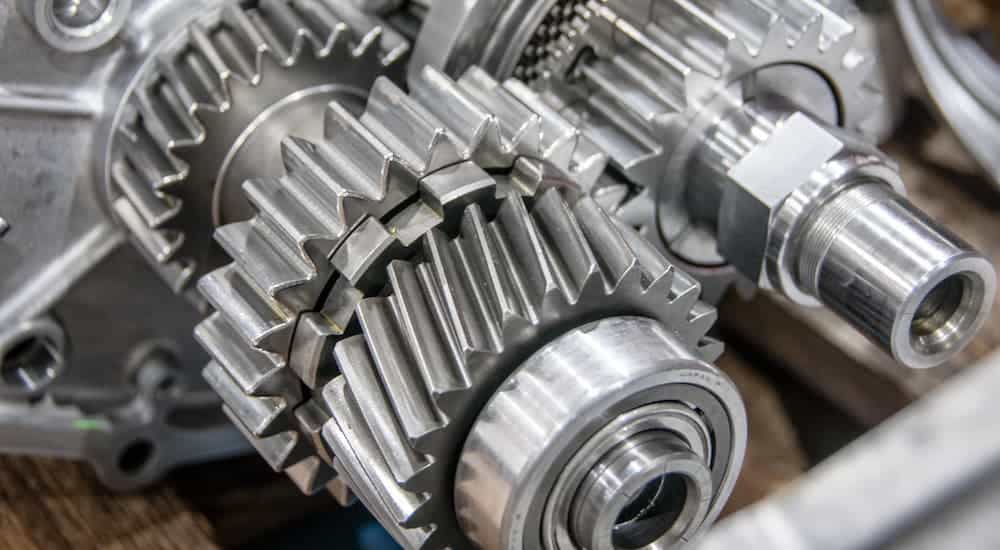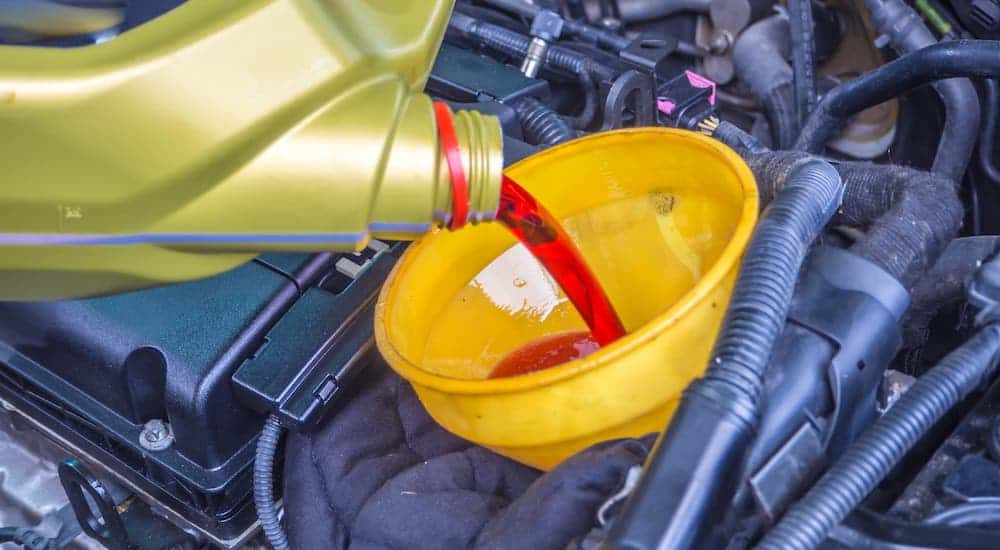Everyone knows about routine vehicle maintenance, such as oil changes, fluids, and brake pad replacements. But did you know that you need to have your transmission checked every now and then too? It’s important to find a certified technician who offers transmission services for your vehicle. If you think you need to have your vehicle checked out, give your local mechanic a call to schedule a transmission service appointment. In the meantime, this article will cover everything you need to know about transmissions and how to service them properly.
What Is a Transmission?
Every vehicle has a transmission in order for it to function. Whatever type of transmission your vehicle has, the jobs remain the same. It’s the execution that changes.
A transmission is responsible for three different jobs. First, it is responsible for torque––sending power from the engine’s speed to the wheels. Second, this power is also used to move the vehicle forward or in reverse. Finally, the transmission allows the vehicle to switch gears. This is important for reaching various speeds as the gear ratio determines how fast the vehicle can go.
What Are the Types of Transmission?
There are five main types of transmissions. These include:
- Automatic
- Manual
- Continuously Variable (CVT and eCVT)
- Automated Manual
- Dual-Clutch (DCT)
An automatic transmission is a self-shifting mechanism that doesn’t require any input from the driver. As the vehicle increases or decreases in speed, the gear ratio will change on its own to meet the engine output requirements.
The manual transmission is the original transmission. You’ve probably heard it referred to as a stick shift, standard transmission, or manual gearbox before. This mechanism uses a clutch and a gear selector that are operated by the driver to engage or disengage the transmission.

What Are the Transmission Components?
If your vehicle is equipped with an automatic transmission, it most likely functions hydraulically using a torque converter or fluid coupling, and planetary gear sets. Hydraulic controls use transmission fluid that is compressed by the oil pump, which helps to modify the vehicle’s speed by controlling the mechanism’s bands and clutches. The torque converter is commonly seen on performance vehicles because it’s better for breakaway acceleration. Meanwhile, the fluid coupling simply replaces the manual clutch. Finally, planetary gear sets include gears, bands, and clutches that alter the speed of rotation based on the output from the engine.
As for the manual transmission, there are so many components that go into this mechanism that we could write a dissertation about it. For the sake of this article, we will settle on the main components, which are the clutch and gear selector.
Continuously variable transmissions are automatic, but they are a bit different. This mechanism uses a variety of chain-linked or belt pulleys, cones, and wheels to seamlessly operate the gear ratio. Some may also use a hydrostatic drive that is made up of a hydraulic motor and a variable displacement pump. This feature sends power to the wheels without any gears. It’s also worth noting that there is a sub-version of the CVT known as the eCVT. This type of transmission is used on hybrid vehicles.
Automated manual transmissions can sometimes be referred to as semi-automatic. Essentially, this transmission perfectly fuses the manual and automatic transmissions together. It uses a clutch and gear setup, but the action of the gear shift is automated by sensors, pneumatics, and processors.
Finally, a dual-clutch transmission is a type of automated manual transmission that can sometimes be called a double-clutch or twin-clutch. It features, you guessed it, two clutches. One is responsible for odd gears, and the other handles the even gears. One housing unit contains two manual transmissions that are operated automatically.
Signs of Transmission Problems
Any of the aforementioned transmissions can run into issues. After all, these are mechanisms that are well-used. Here’s a quick list of things you should look out for that may indicate your vehicle is having transmission issues:
- Unusual sounds such as grinding, humming, clunking, whistling or whining
- Vibrations or shaking
- Leaking fluids
- Gear slippage or jumps
- Difficulty shifting gears
- Cloudy or thick transmission fluid on the dipstick
- Vehicle won’t start
Also, if you smell something burning, that could be your transmission. If you notice any of these issues, get your vehicle to a mechanic immediately. Keep in mind that many transmissions are comprised of over 800 parts. Ensuring that all of these components are functioning properly is key to your vehicle’s overall health and lifespan.

Transmission Services at You Local Mechanic
When you schedule an appointment to have a certified technician look at your transmission, they will begin the service by scanning the vehicle’s computer for error codes. This is the easiest and fastest way to know what’s going on inside your vehicle. Once the technician has diagnosed the root of the issue, they can begin work.
Most basic transmission services include checking the fluid level. The most common transmission service is a simple fluid change. Transmission fluid is essential for any type of automatic transmission due to the hydraulic mechanism. If you have experienced your gears getting stuck or any difficulty shifting, the transmission fluid could be to blame. The technicians can either add more fluid if you’re running low or replace the existing fluid completely if it looks dirty. They can also swap out the older transmission filter with a brand new one. This will ensure that everything is flowing properly.
Other components that many mechanics will take a look at during the transmission include transfer cases, CV joints, engine flywheels, and drive shafts.
If you look at your owner’s manual, you can see how often the manufacturer recommends changing the transmission fluid. Generally, it’s every 30,000 to 60,000 miles. Always remember that it is cheaper, in the long run, to properly maintain your vehicle’s transmission than it is to replace it entirely.
Other Common Transmission Problems
Aside from transmission fluid, another common issue for automatics is failed needle roller bearings. These small, lightweight components keep the gears from grinding. If these roller bearings become worn down, it could cause premature damage to your gears.
For the manual transmission, the most common issues that our technicians see are worn down clutches and gear synchronizers.
Which Transmissions Are the Easiest to Maintain?
By far, the manual transmission is the easiest transmission to maintain. Its archaic design works in its favor. Meanwhile, the eCVT, CVT, and other automatic transmissions tend to need the most attention when it comes to maintenance. This is due to the greater number of components and the need for transmission fluid. The automated manual and dual-clutch transmissions are relatively easy to maintain as well unless a sensor goes bad.
Schedule a Transmission Service
Are you having trouble with your transmission? Take a moment to search for your local mechanic online and give them a call to schedule an appointment for a transmission service. A skilled technician will diagnose the problem and let you know what’s going on. Depending on the severity, they will give you an estimated time of completion. Look at online reviews to find experts who will work hard to ensure that you are back on the road as soon as possible.

